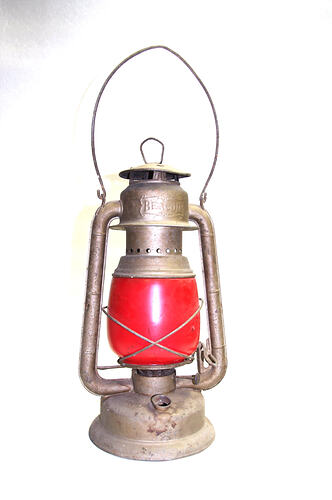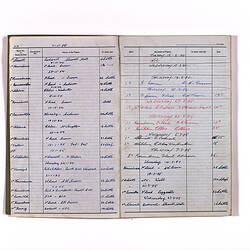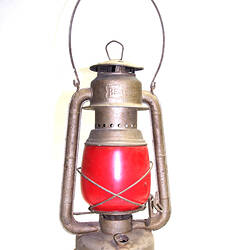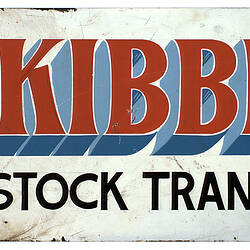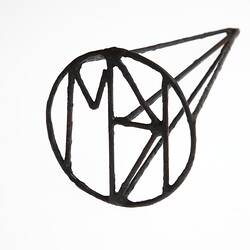Summary
Railway lamp used at the Newmarket Railway siding. Alternative Names: Railway Lamp, Lantern, Kerosene/Oil Lamp; Hurricane Lamp; Cold Blast Lamp.
Oil fed lamps entered into the rail industry around 1860. There were numerous types of lamps used for a multitude of jobs. Lamps were hung on trains to indicate the class of train, at cross roads, and were used within the rail yard by workers to signal to the trains. The lamp in the Newmarket Collection is known as a 'hurricane lamp' and was used as an emergency stop signal. The red glass globe suggests that the lamp was used for signalling either along the rail line or in the rail yard. 'Cold Blast Lanterns' channel fresh air through side tubes and the globe plate. This produces an almost white type of flame that has very little flicker and is a bright and efficient flame.
It was produced by the Canadian company General Steel Ware Limited and can be dated to the years following 1933 based on the inclusion of the company's initials GSW on the lamp. GSW formed in 1933 when the E.T. Wright Company and Sheet Metal Company of Canada merged.
Physical Description
Portable oil lantern used in the railway industry. The steel lamp has an oil tank on the bottom that forms the base of the lamp. The tank has a door for filling (missing), it also houses the wick and knob (missing) that increases or decreases the length of the wick. A red glass globe sits over the wick and rests on the tank. It is protected by two steel wires that curve around the glass to form a cradle like structure. The globe is broad at its base, narrowing at the top. At the top of the globe is a steel cover. The cover is vented to allow the heat to escape the unit. The cover and tank are connected to each other by way of two rounded 'C' shaped steel arms. Attached to the top of the arms is a curved wire that allows the lamp to be hung on a hook. The lamp is bright red in colour.
More Information
-
Collection Names
-
Collecting Areas
Home & Community, Engineering, Sustainable Futures, Working Life & Trades
-
Acquisition Information
Donation from Mr & Mrs W. & J. Clifton, Dec 1990
-
Place Used
Newmarket Saleyards, Newmarket, Greater Melbourne, Victoria, Australia, 1933 -1987
-
Manufacturer
General Steel Ware Limited, Hamilton, Ontario, Canada, after 1933
General Steel Ware, Hamilton, Ontario, Canada -
Organisation Named
-
Organisation Named
-
Inscriptions
Raised text on top steel cover: 'BEACON'. Raised text on oil tank base: 'GUARANTEED WIND PROOF'. Text on lower shield edge on red glass globe: 'GSW/ SMP QUALITY/ 'TRADE MARK'' (SMP is understood to refer to 'Simulation Modelling Process'). Text on red glass globe: 'MADE IN CANADA'.
-
Classification
-
Category
-
Discipline
-
Type of item
-
overall dimensions
21 cm (Length), 15 cm (Width), 37 cm (Height)
-
Keywords
Domestic Equipment, Livestock Sale Yards, Working Life, Making History - Newmarket Saleyards
